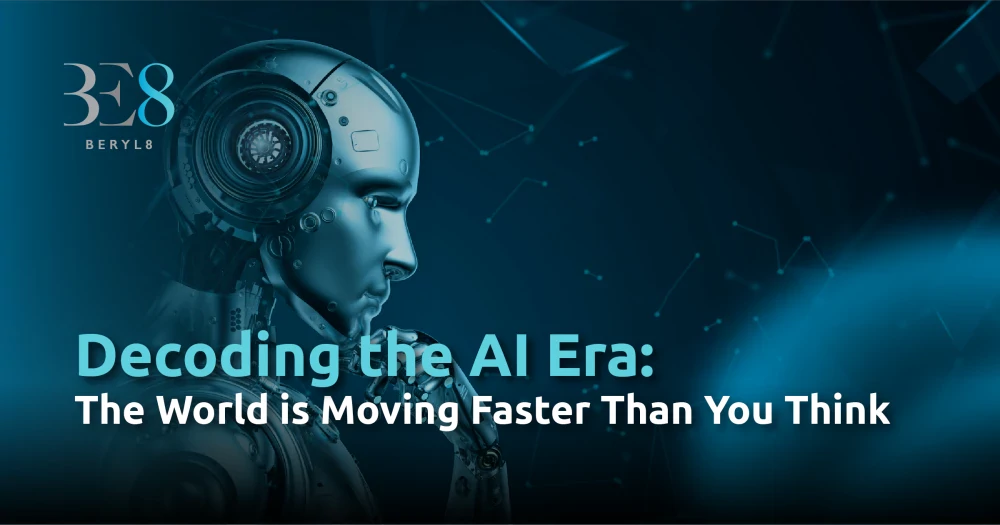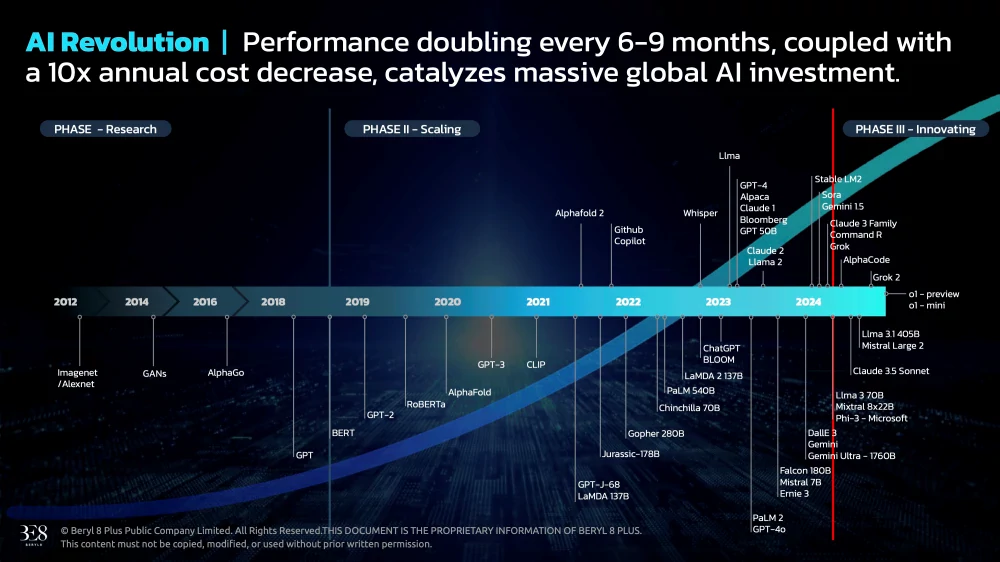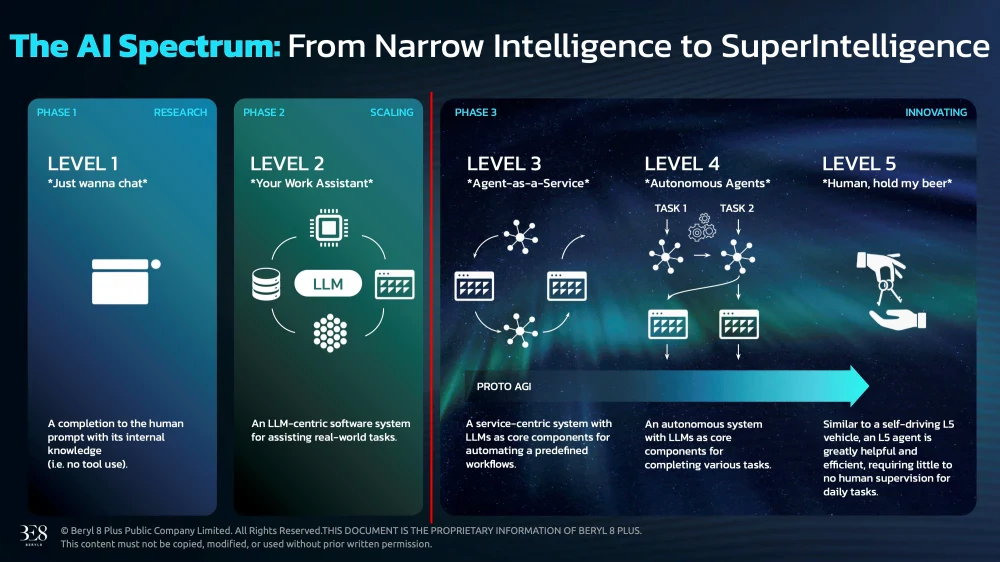Decoding the AI Era: The World Is Moving Faster Than You Think

The global economy remains fragile—challenged by rising inflation, mounting public debt, and an uneven post-crisis recovery across nations. At the same time, geopolitical tensions among superpowers and recurring international trade issues pose significant risks, directly affecting Thai businesses. In this volatile climate, investment landscapes and business confidence are facing growing uncertainty.
Yet amidst these challenges, Artificial Intelligence (AI) has emerged as a powerful opportunity. Organizations seeking to enhance operational efficiency and gain a competitive edge are increasingly turning to AI. It automates workflows, analyzes vast datasets, and predicts future trends with high accuracy—all while reducing costs and saving time. Simultaneously, AI opens the door to new innovations in product and service development tailored to the digital age. With rapid advancements, businesses can no longer afford to ignore its potential.
This article explores the transformative role of AI in reshaping business landscapes and driving innovation—and offers strategies for organizations to unlock its full potential.

From 2012 to 2024, the timeline of AI development reveals remarkable progress within just a few short years. Milestones like AlphaGo (2016), GPT-3 (2020), and ChatGPT (2022) mark pivotal moments in tech history. As Andrew Ng once said, “AI is the new electricity,” reflecting its revolutionary impact across industries—just as electricity once transformed society. According to Bank of America, the rise of Generative AI (GenAI) is accelerating beyond imagination, with widespread adoption taking off only in the past 18 months. The foundational systems powering this revolution emerged just six years ago, following 80 years of gradual AI evolution.
What Makes Modern AI Different?
Modern AI stands apart from older technologies due to several key characteristics:
- Omni-use: AI is a general-purpose foundational technology. Its algorithms can be applied across various domains—from medicine and finance to customer service and marketing.
- Hyper-evolution: Unlike past technologies that took decades to evolve, AI advances rapidly, with new breakthroughs emerging nearly every month.
- Asymmetry: AI has dramatically lowered costs, enabling small teams or individuals to access powerful tools once reserved for large institutions.
- Autonomy: AI can now operate independently, executing tasks without human intervention, such as auto-planning and self-executing objectives.
Can AI Have Original Thought?
Where previous technologies expanded human expression (e.g., the internet or television), Generative AI goes a step further. Though trained on past data, it can create entirely new content beyond its training set—a phenomenon known as emergent behavior. While research shows that AI doesn’t “think” like humans, it can generate outputs that are not explicitly programmed. This brings AI closer to original or creative thinking than ever before.
The Spectrum of AI: 5 Levels in 3 Phases

The AI Spectrum categorizes development across five levels within three major phases: Artificial Narrow Intelligence (ANI), Artificial General Intelligence (AGI), and Artificial Capable/Superintelligence (ACI/ASI).
- Level 1 (ANI): Basic AI that responds to prompts (e.g., chatbots) without external tools.
-
Level 2 (AGI): Systems centered on Large Language Models (LLMs) offering specific assistance (e.g., GitHub Copilot).
Level 3 (Agent-as-a-Service): Pre-programmed agents that perform predefined business or analytics tasks.
Level 4 (Autonomous Agents): LLM-based systems capable of understanding complex instructions and multi-step workflows (e.g., AI navigation systems).
- Level 5 (ASI): Artificial Superintelligence with human-like problem-solving and innovation capabilities.
Growth and Costs of AI
AI has rapidly advanced in both performance and accessibility. According to CNAS, the compute power required to train AI models has doubled every 6–7 months. OpenAI’s CEO reported a 10x annual reduction in the cost of AI access. For example, the cost per million tokens in GPT-4 dropped from several dollars to just a few cents in one year. This makes AI the fastest cost-declining technology in history—prompting organizations to prepare for major transformation.
How Organizations Can Prepare for the AI Era
To stay competitive, businesses must optimize workflows, streamline operations, and strengthen their digital infrastructure. Here are several strategic steps:
- Assess Opportunities: Identify how AI can integrate with your operations. Analyze current processes and data readiness to define actionable goals.
- Upskill Teams: Invest in training and build digitally fluent, agile teams ready to adopt new tools.
- Pilot Projects: Start with small-scale AI pilots such as customer analytics or automation systems. Measure outcomes, refine approaches, and scale over time.
- Foster a Culture of Innovation: Encourage experimentation and openness to change. Promote a growth mindset across the organization.
- Partner with Experts: Collaborate with experienced AI partners who understand your industry and can deliver customized solutions
At Beryl 8 Plus, we continuously invest in AI technologies and talent. Our industry-specific AI solutions are designed to help organizations achieve measurable results with speed and precision. With a deep understanding of the Thai business landscape, we serve as your strategic partner—from AI strategy design to tailored implementation.



